In the digital age, data is king. It guides decision-making and shapes strategies. For businesses, understanding this data is crucial. That's where product analytics tools come into play.
They illuminate insights, powering your product's journey toward success. Discover their full potential in this deep dive into the world of product analytics tools.
What are Product Analytics Tools?
Product analytics tools are sophisticated business intelligence solutions that capture, process, and analyze user interaction data. This can be anything from a simple web page click to the user journey through your app to more complex interactions, such as purchase history and feature usage.
These tools are often designed with an intuitive interface to visualize product analytics data, enabling product managers to understand the "how" and "why" behind user interactions with their product.
This leads to more informed decision-making and effective strategies for product development, marketing, customer retention, and overall customer success.
Moreover, product analytics tools can unearth hidden patterns, trends, and insights about a product's usage and overall performance.
They reveal critical product metrics like user retention, user engagement, active users, churn rate, and the paths users take within your digital product.
Through these insights, product managers can refine and optimize their products to better meet user needs and achieve their strategic goals.
They are a powerful tool in any product manager’s arsenal, enabling them to turn data into actionable insights and, ultimately, product success.
In an increasingly digital world, product analytics tools are no longer “nice-to-have” — they are a necessity for any product-focused business wanting to remain competitive.
What Should I Look for in a Product Analytics Tool?
Selecting the right product analytics software is integral to success. But what should you look for specifically?
First, look for real-time data processing. In a rapidly evolving digital landscape, it's essential to have up-to-the-minute information at your fingertips. A tool that provides real-time analytics can enable product managers to identify and respond to trends or issues promptly.
Second, consider ease of use and interface intuitiveness. You'll want a tool that’s user-friendly and allows for easy data visualization. After all, being able to comprehend and interpret the data quickly is just as important as collecting it.
Third, ensure the tool has the capability to track a wide range of user behaviors. The more data points the tool can gather, the more detailed and valuable your insights will be.
Also, consider the tool's integration capabilities. It should be able to seamlessly integrate with other software systems that you use, such as your CRM or marketing automation platform.
Lastly, look for scalability. As your business grows, so will your data. The tool you select should be able to handle increasing amounts of data without any loss of product performance.
Note that this isn’t something that’s always possible with basic product analytics tools like Google Analytics. Therefore, you may need to look for more advanced analytics tools, which we’ll cover shortly.
By understanding your specific needs and what different tools offer, you can select the product analytics software that will best propel your product team toward its goals.
You can also read our article on product analytics books to better understand this technology.
Now that we know what product analytics is and what to look for in a tool, here are some of the top platforms that check all of the boxes.
1. Woopra
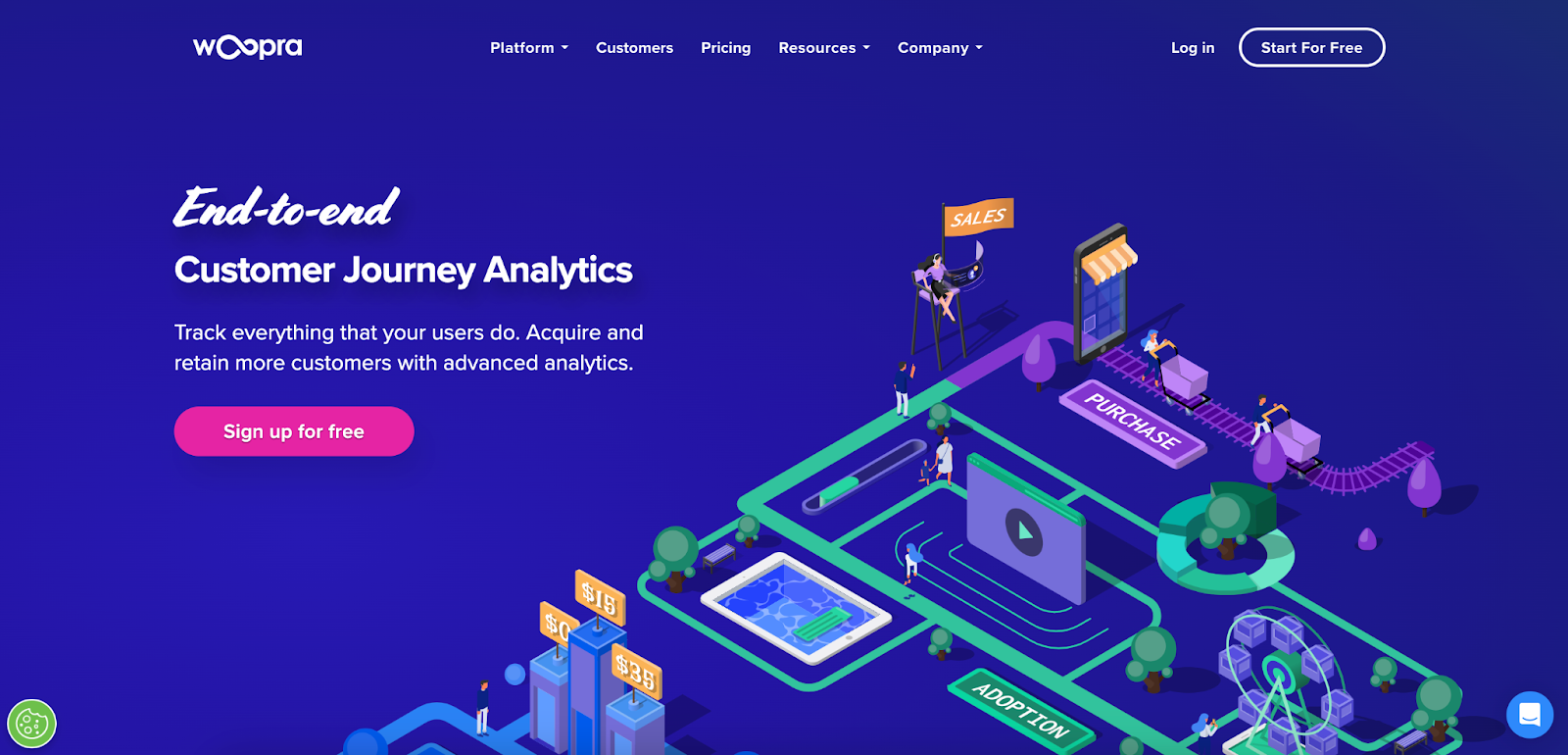 Source: Woopra
Source: Woopra
Woopra is an end-to-end product analytics tool, providing real-time data and comprehensive insights into customer behavior that goes much deeper than Google Analytics.
Its strength lies in its ability to track customer journeys across multiple touchpoints, allowing product teams to understand their users better and improve the overall user experience.
This product analytics platform also offers a cohort analysis feature, which allows businesses to analyze growth trends over time for “big picture insights.”
Besides that, Woopra integrates seamlessly with other popular tools, enhancing its functionality.
2. Mixpanel
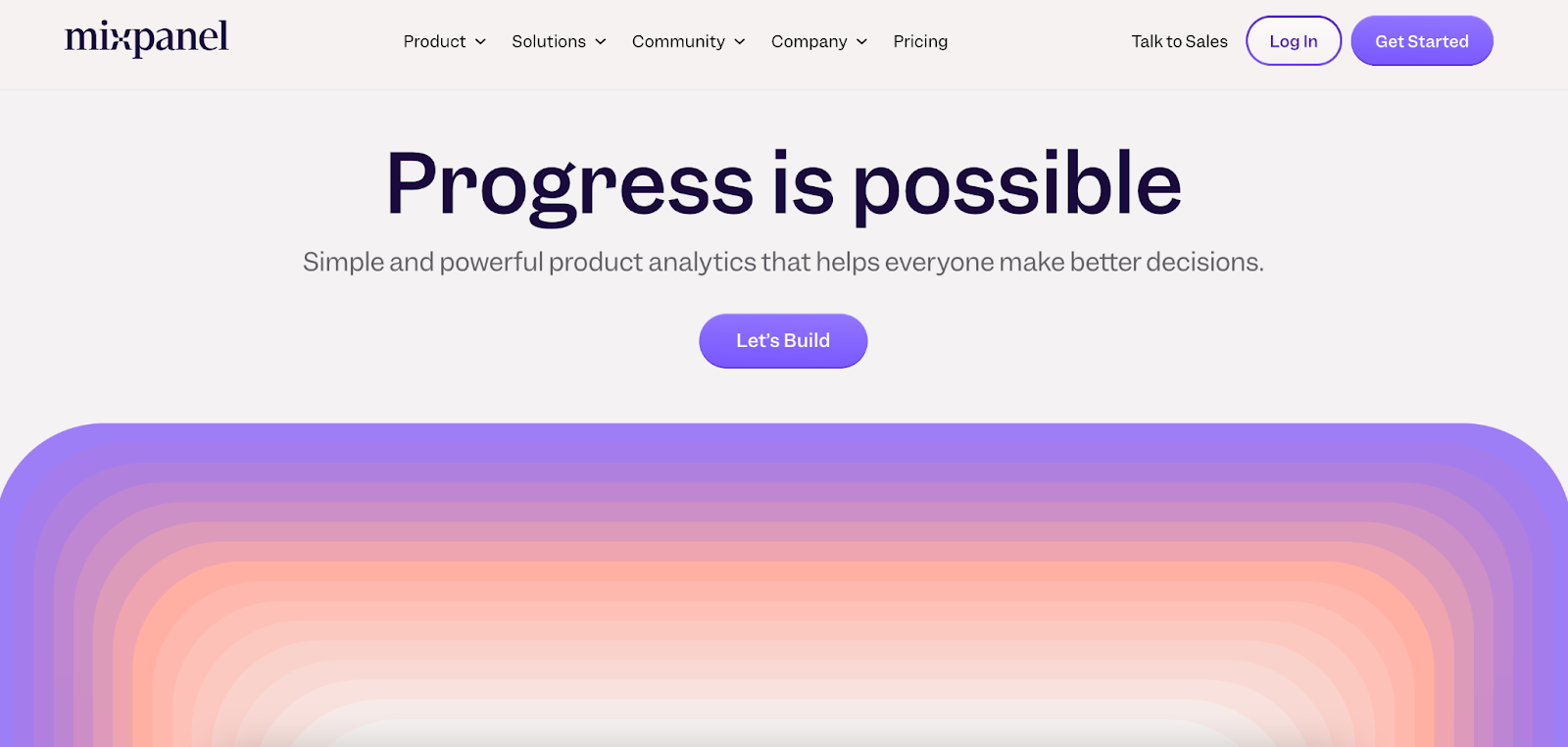 Source: Mixpanel
Source: Mixpanel
Mixpanel shines in its user-centric approach to product analytics. It allows businesses to track individual users' actions across different platforms, providing insights into product usage, feature usage, user retention, user engagement, and conversion.
With its unique ability to perform complex event tracking, Mixpanel is one of the more formidable product analytics tools for data-driven decision-making.
3. Amplitude
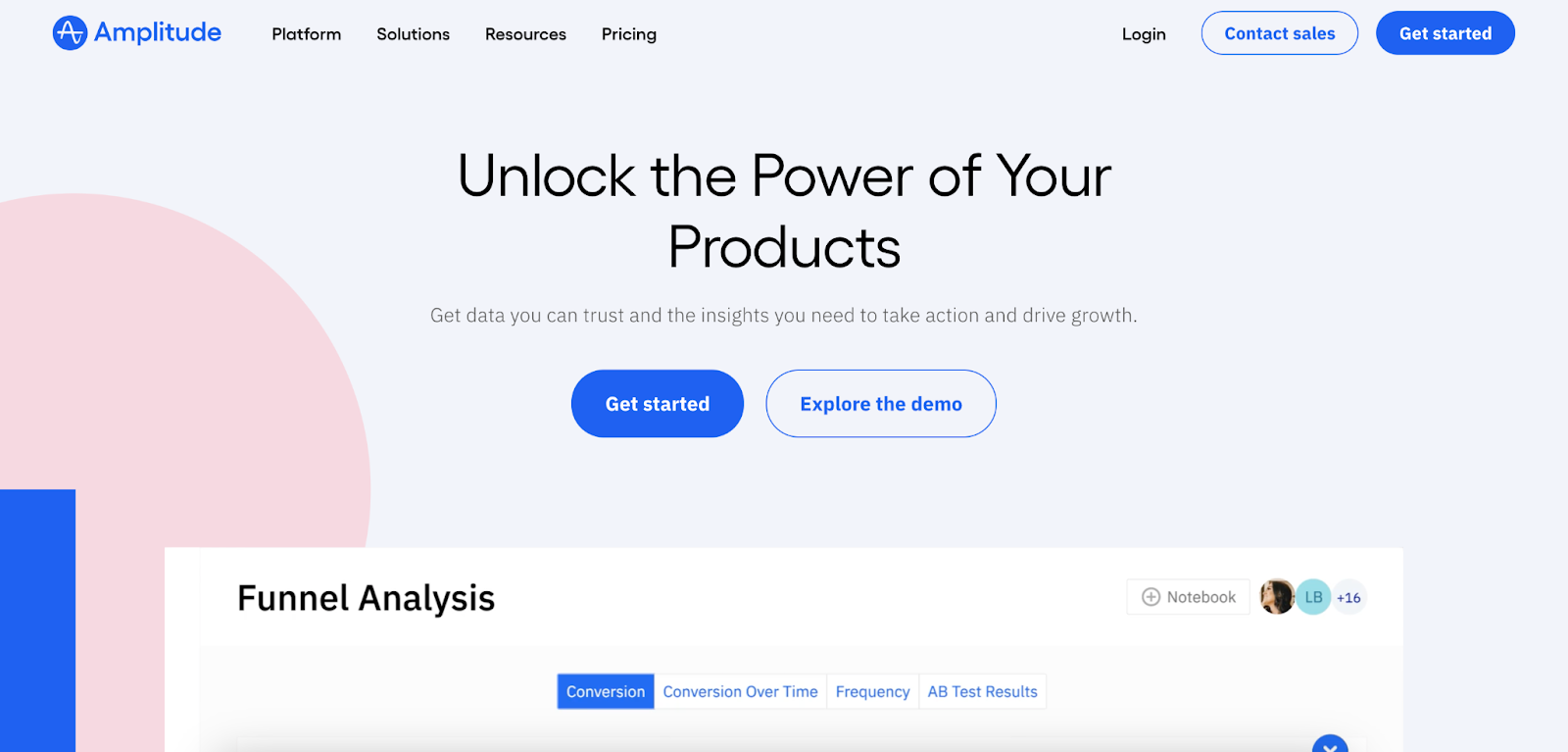 Source: Amplitude
Source: Amplitude
Amplitude offers high-quality analytics for product teams, focusing on user behavior data to increase retention and user engagement.
Its intuitive interface makes data analysis accessible to all product management team members, not just data scientists.
This platform's micro-level data segmentation capabilities, along with its strong focus on collaboration, sets Amplitude analytics apart from many others.
4. Heap Analytics
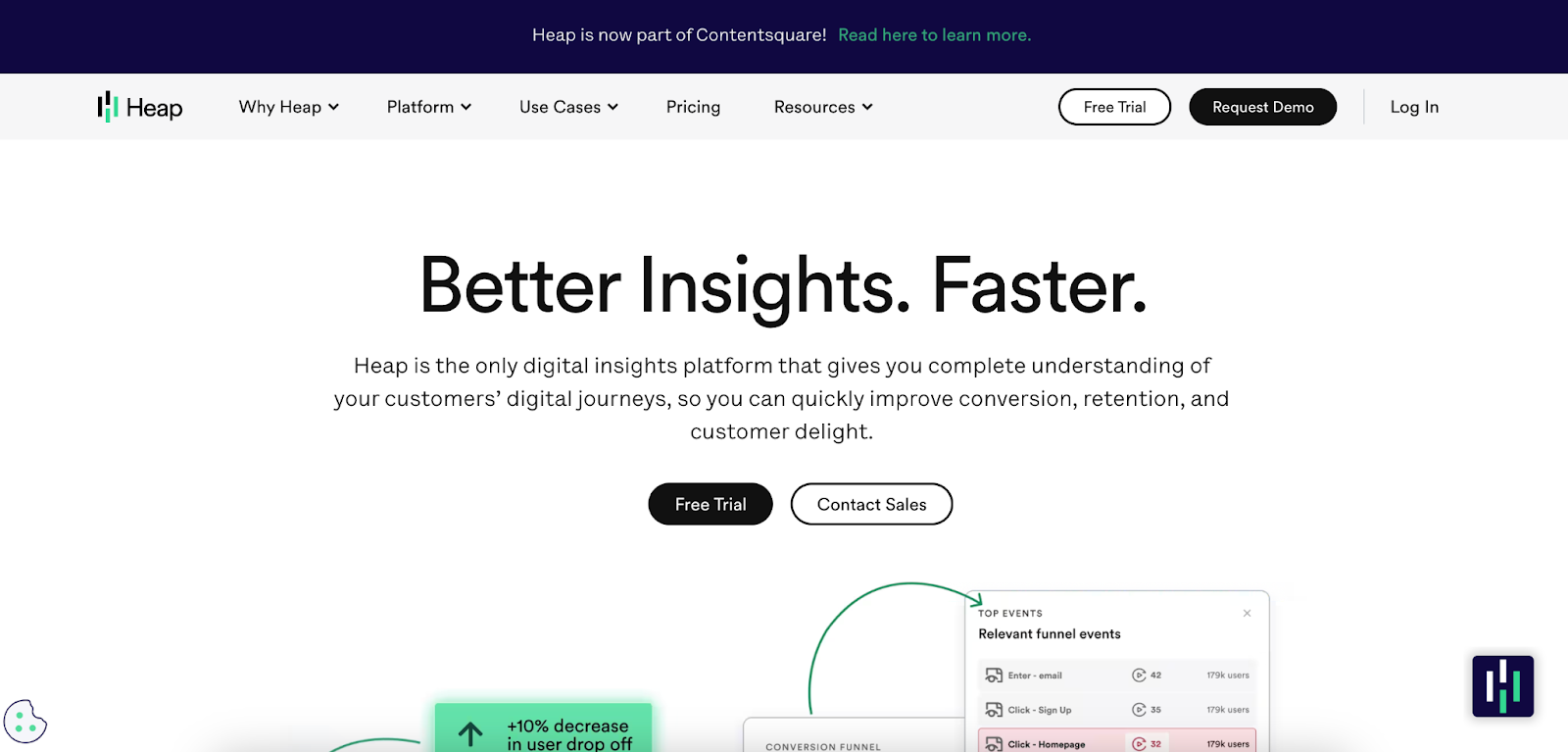 Source: Heap Analytics
Source: Heap Analytics
Heap Analytics stands above many other product analytics tools with its innovative approach: automatically capturing all user interactions, thus eliminating the need for manual tracking setup.
This lets product management teams retroactively analyze data without pre-planned tracking. With its flexible data modeling, Heap makes it easier for businesses to translate raw data into actionable insights for streamlined funnel analysis, AB testing, and more.
- Kissmetrics
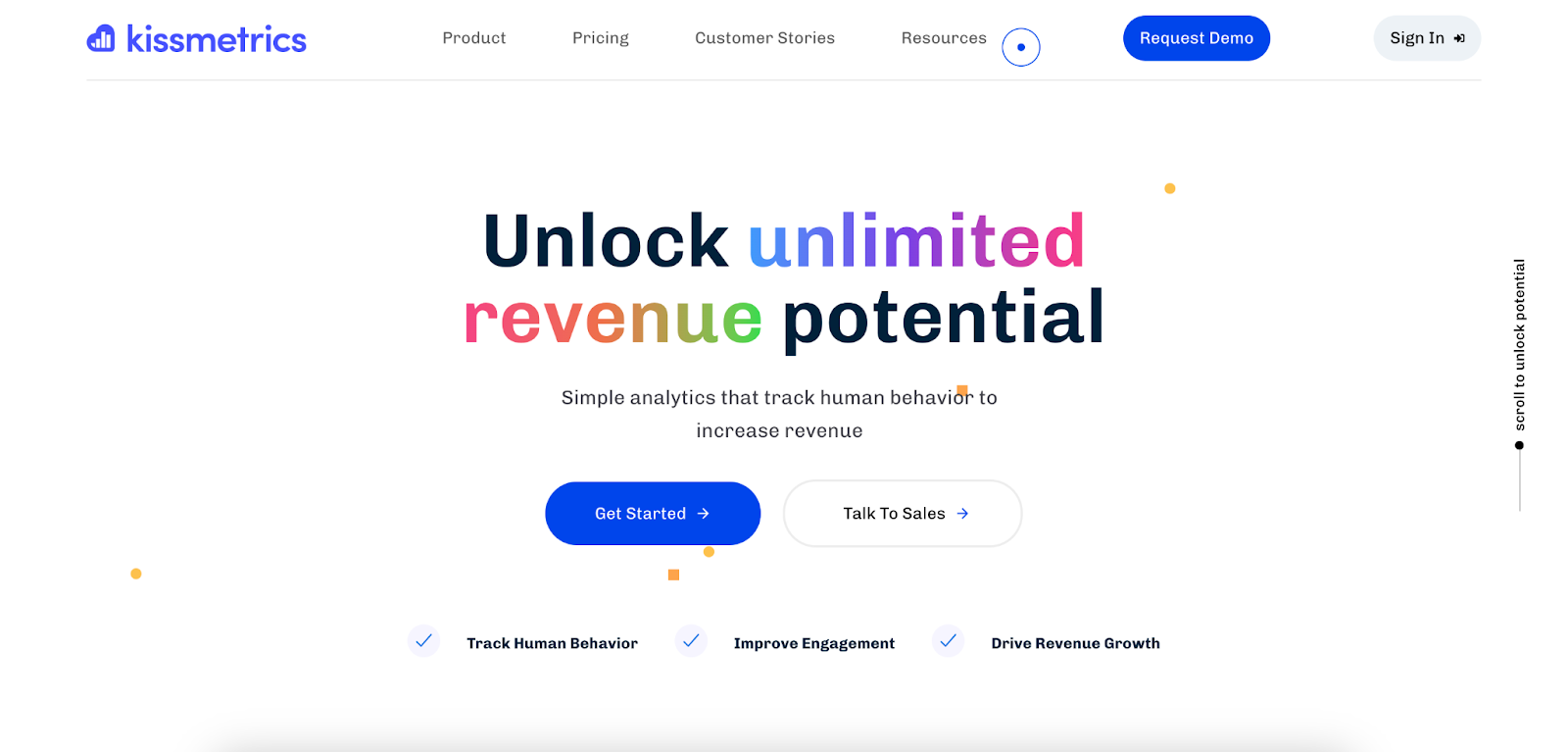 Source: Kissmetrics
Source: Kissmetrics
Kissmetrics offers a person-based product and marketing analytics platform, focusing on tracking individual user behavior across multiple devices.
It excels in delivering detailed reports on funnels that allow product teams to better understand user behavior and optimize marketing strategies.
6. Adobe Analytics
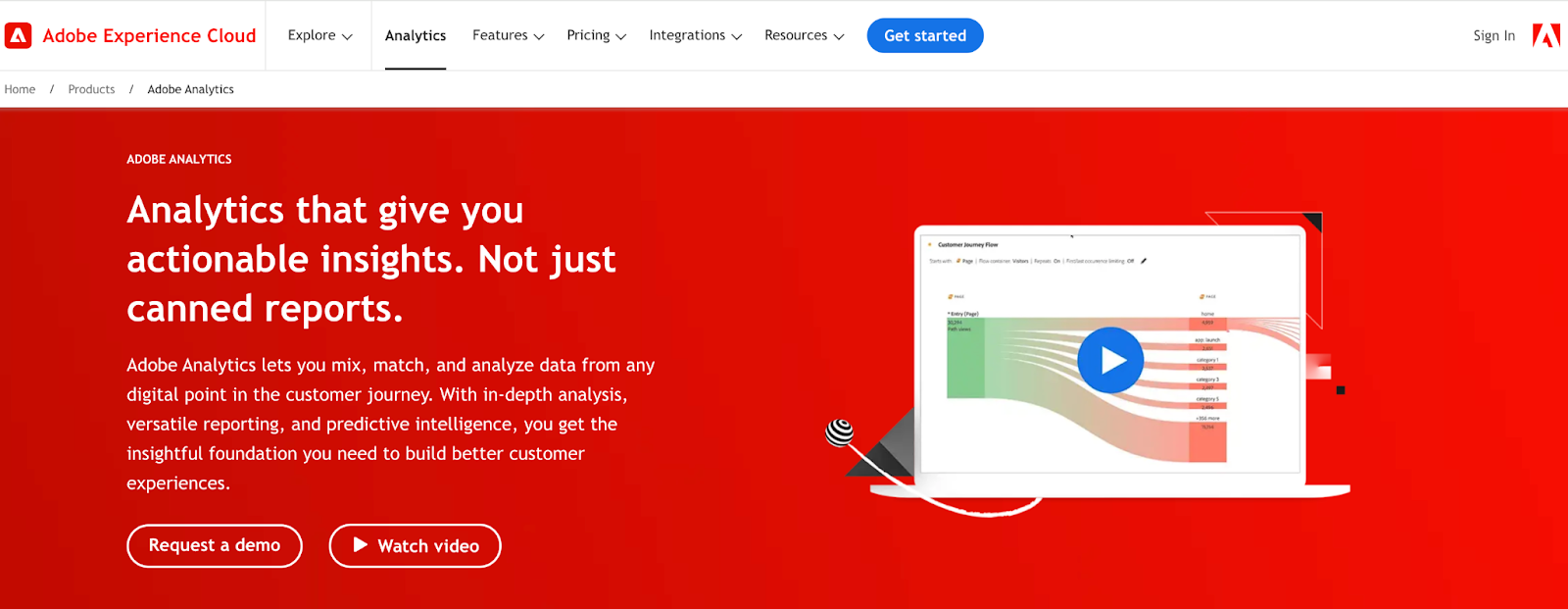 Source: Adobe Analytics
Source: Adobe Analytics
Part of the Adobe Experience Cloud, Adobe Analytics offers deep-diving analysis capabilities that exceed more basic web analytics tools like Google Analytics. It's a comprehensive platform for large businesses looking to analyze each customer journey in intricate detail.
From real-time analytics to predictive analytics, this product management platform provides valuable insights for data-driven decisions.
7. Pendo
 Source: Pendo
Source: Pendo
Pendo combines product analytics software with user feedback and personalized guidance, delivering a holistic customer experience.
It provides insights into what features customers use, like, and struggle with. By using Pendo, businesses can proactively address user issues, improve their product's usability, and increase user satisfaction.
- Hotjar
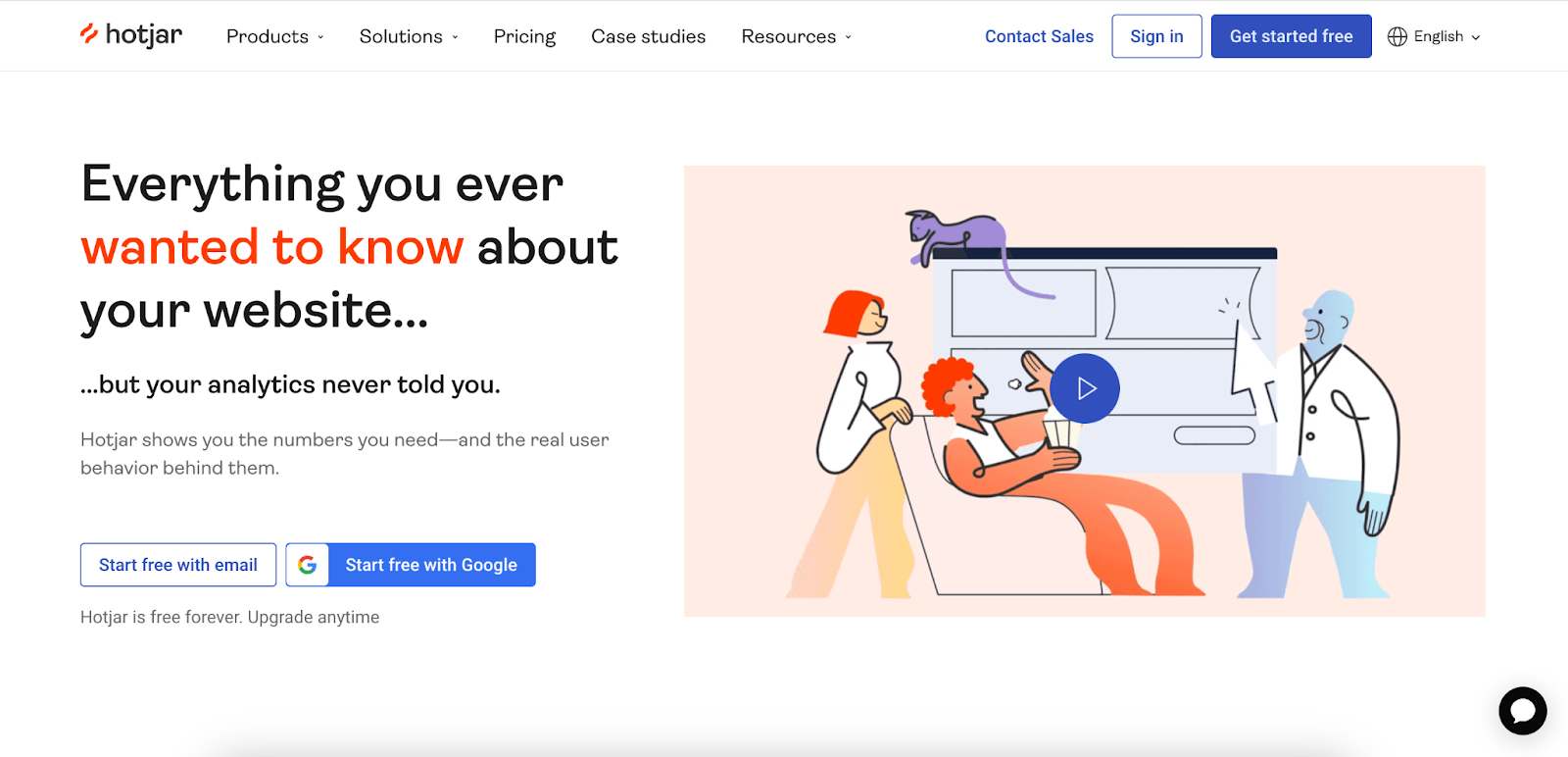 Source: Hotjar
Source: Hotjar
Hotjar is a user-focused analytics and feedback tool that provides visual representations of user behavior, including heatmaps and session recordings.
This qualitative data coupled with traditional quantitative metrics gives businesses a 360-degree view of their user experience, leading to more informed optimization strategies.
9. Crazy Egg
 Source: Crazy Egg
Source: Crazy Egg
Similar to Zoho Analytics, Crazy Egg provides a visual way to understand user interaction with your website.
Its heatmap, scroll map, and other visual reports enable businesses to quickly identify problem areas and opportunities on their site.
It's an excellent tool for optimizing your website's design and improving user experience to maximize digital adoption.
10. FullStory
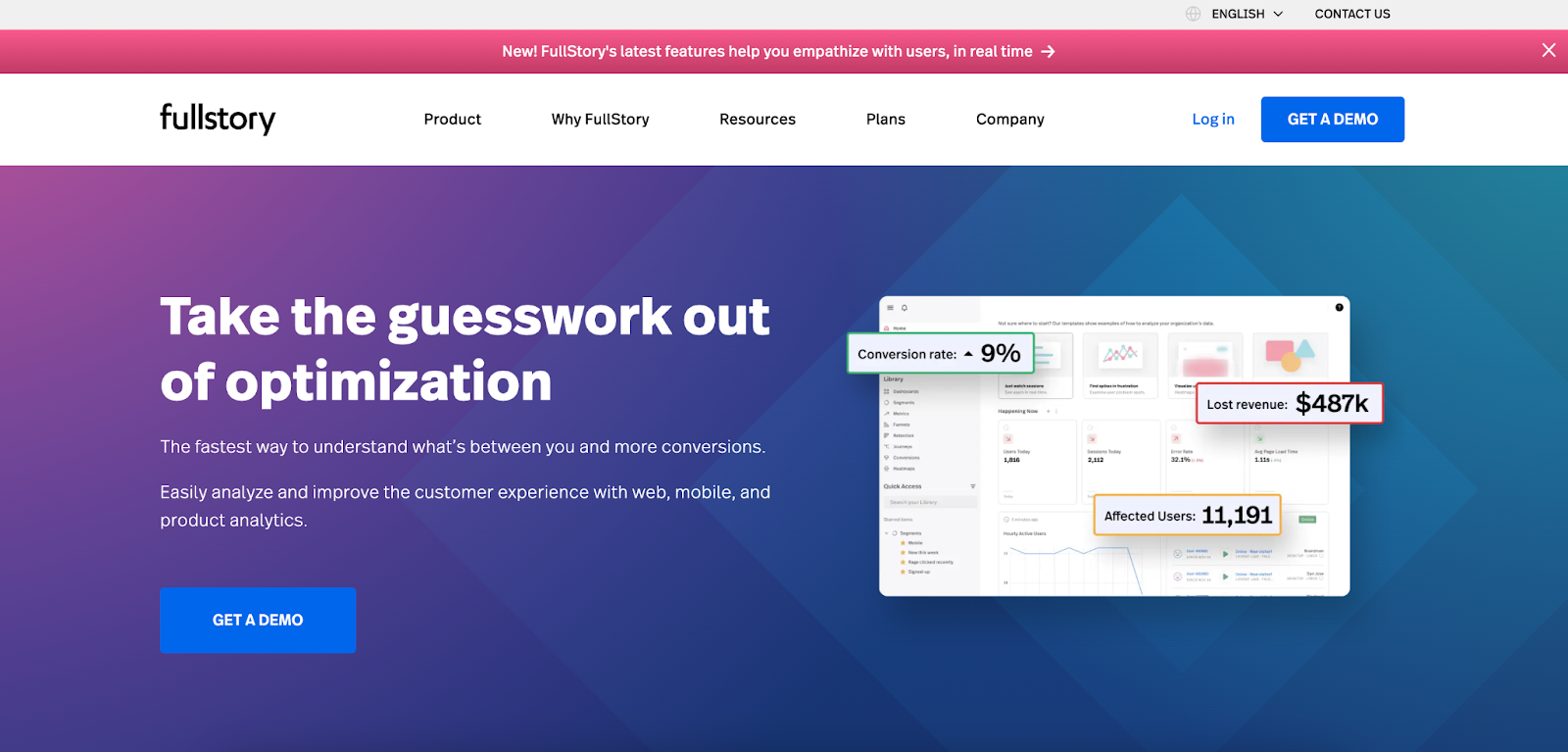 Source: FullStory
Source: FullStory
Similar to Gainsight PX, FullStory provides digital experience analytics, capturing customer interactions on your website or app with incredible detail.
From heatmaps to session replay, FullStory brings together quantitative and qualitative data for a comprehensive understanding of user behavior, thus allowing for a smoother user journey, a better UX, conversion rate optimization, and increased product adoption.
11. Appsee
Appsee stands out for its visual in-app analytics, providing user session recordings and touch heatmaps.
It offers an extraordinary level of detail about how users interact with your app, highlighting problematic UI issues. This tool is crucial for anyone wanting to optimize their app's UX and boost user engagement.
12. Localytics
Localytics is a mobile engagement platform designed for personalized messaging. In addition to robust analytics capabilities, it allows businesses to send targeted messages based on user behavior data.
This helps improve engagement, retention, and conversions within mobile applications.
13. MoEngage
 Source: MoEngage
Source: MoEngage
MoEngage combines product analytics with marketing automation, providing a comprehensive view of the customer journey. It delivers behavior-based insights and enables personalization at scale.
By leveraging AI, MoEngage helps businesses engage users with the right message at the right time.
Final Thoughts
The right product analytics software can be a game-changer. With a wide array of tools like Woopra, Amplitude, Mixpanel, and many more, businesses can delve into user behaviors, guiding strategic decisions and optimizing products.
It just boils down to choosing the right tool that best aligns with your business needs and goals.


